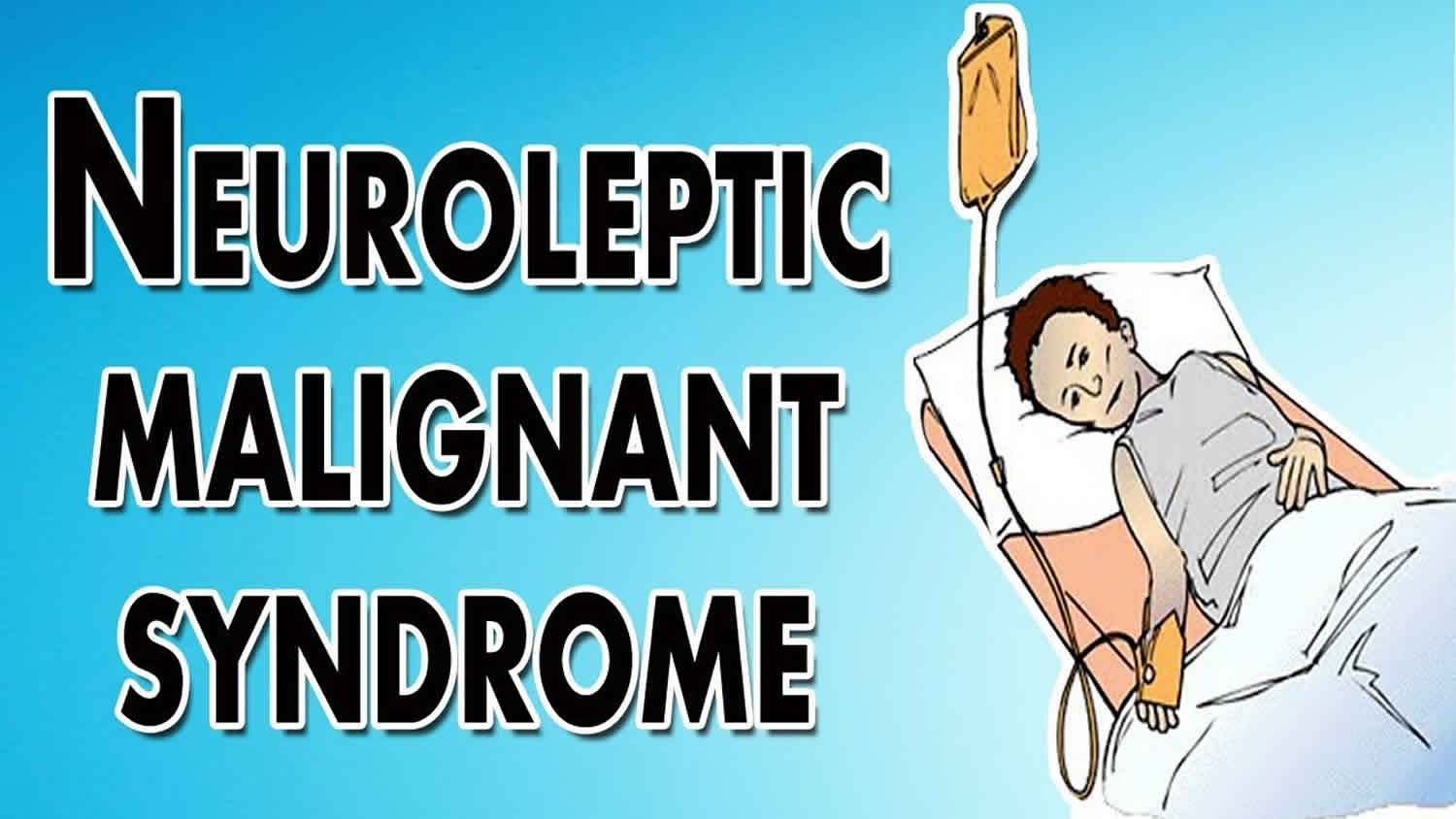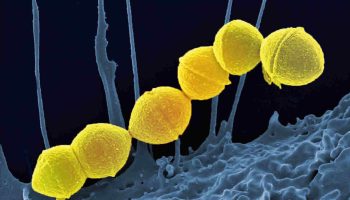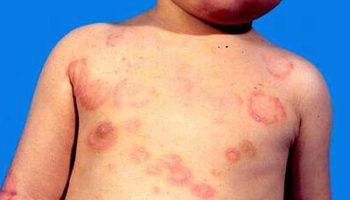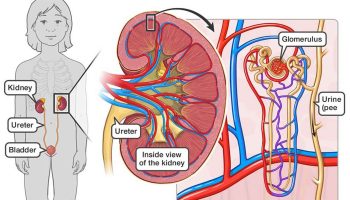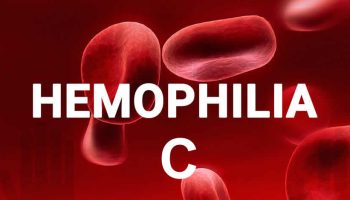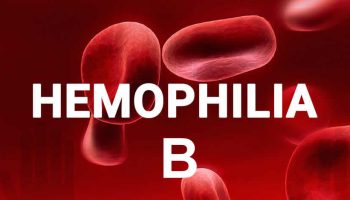What is neuroleptic malignant syndrome
Neuroleptic malignant syndrome (NMS) is a life-threatening, neurological disorder most often caused by an adverse reaction associated with the use of dopamine-receptor antagonist medications or with rapid withdrawal of dopaminergic medications 1. Neuroleptic malignant syndrome has been associated with virtually every neuroleptic agent but is more commonly reported with the typical antipsychotics like haloperidol and fluphenazine.
Neuroleptic malignant syndrome (NMS) symptoms include high fever, sweating, unstable blood pressure, stupor, muscular rigidity, and autonomic instability. In most cases, neuroleptic malignant syndrome develops within the first 2 weeks of treatment with the drug; however, neuroleptic malignant syndrome may develop any time during the therapy period. Neuroleptic malignant syndrome can also occur in people taking anti-Parkinsonism drugs known as dopaminergics if those drugs are discontinued abruptly.
Recurrence of an attack of neuroleptic malignant syndrome is not uncommon. The risk of recurrence is closely related to the time elapsed between the end of the original episode of neuroleptic malignant syndrome and the beginning of renewed administration of an antipsychotic drug. If the waiting period is two weeks or less, about 63% will have a recurrence. If the waiting period is more than two weeks, the percentage of patients experiencing a relapse drops to about 30 2.
While uncommon, neuroleptic malignant syndrome remains an important part of the differential diagnosis of fever and mental status changes because it requires early diagnosis and treatment to prevent significant mortality and death.
Treatment involves immediately discontinuing the offending neuroleptic or antipsychotic drug, aggressive supportive care to manage and prevent complications, and pharmacologic therapy in severe cases. The empiric medications most frequently used for refractory neuroleptic malignant syndrome include bromocriptine mesylate, a dopamine agonist, and dantrolene sodium, a muscle relaxant. If neuroleptic malignant syndrome is due to the rapid withdrawal of dopaminergic medication, rapid re-institution of the medication may improve symptoms.
Neuroleptic malignant syndrome vs Serotonin syndrome
Serotonin syndrome is a potentially life threatening condition due to excessive serotonin in your body 3. Serotonin syndrome most often occurs when two medicines that affect the body’s level of serotonin are taken together at the same time. The medicines cause too much serotonin to be released or to remain in the brain area. Serotonin syndrome can occur when you increase the dose of such a drug or add a new drug to your regimen. Certain illegal drugs and dietary supplements also are associated with serotonin syndrome. For example, you can develop serotonin syndrome if you take migraine medicines called triptans together with antidepressants called selective serotonin reuptake inhibitors (SSRIs), and selective serotonin/norepinephrine reuptake inhibitors (SSNRIs).
Common selective serotonin reuptake inhibitors (SSRIs) include citalopram (Celexa), sertraline (Zoloft), fluoxetine (Prozac), paroxetine (Paxil), and escitalopram (Lexapro). Serotonin/norepinephrine reuptake inhibitors (SSNRIs) include duloxetine (Cymbalta) and venlafaxine (Effexor). Common triptans include sumatriptan (Imitrex), zolmitriptan (Zomig), frovatriptan (Frova), rizatriptan (Maxalt), almotriptan (Axert), naratriptan (Amerge), and eletriptan (Relpax).
If you take these medicines, be sure to read the warning on the packaging. It tells you about the potential risk of serotonin syndrome. However, do not stop taking your medicine. Talk to your doctor about your concerns first.
Serotonin syndrome is more likely to occur on starting or increasing the medicine.
Older antidepressants called monoamine oxidase inhibitors (MAOIs) can also cause serotonin syndrome with the medicines described above, as well as meperidine (Demerol, a painkiller) or dextromethorphan (cough medicine).
Drugs of abuse, such as ecstasy, LSD, cocaine, and amphetamines have also been associated with serotonin syndrome.
Serotonin is a chemical your body produces that’s needed for your nerve cells and brain to function. But too much serotonin causes symptoms that can range from mild (shivering and diarrhea) to severe (muscle rigidity, fever and seizures). Severe serotonin syndrome can be fatal if not treated.
Signs and symptoms of serotonin syndrome include:
- Agitation or restlessness
- Confusion
- Sweating
- Tremors
- Nausea
- Vomiting
- Raised body temperature
- Restlessness
- Overactive reflexes
- Fast heart rate and high blood pressure
- Dilated pupils
- Loss of muscle coordination or twitching muscles
- Muscle rigidity
- Heavy sweating
- Diarrhea
- Headache
- Shivering
- Goose bumps
Severe serotonin syndrome can be life-threatening. Signs and symptoms include:
- High fever
- Seizures
- Irregular heartbeat
- Unconsciousness
Symptoms of serotonin syndrome typically occur within hours of taking a drug. Individuals often experience an increased heart rate, restlessness, and confusion. The individual may experience heavy sweating, muscle twitching or rigidity, dilation of the pupils, shivering, headaches, and diarrhea. Symptoms often last for 1 to 3 days before they resolve. More severe cases of serotonin syndrome may involve high fever, irregular heartbeats, seizures, and loss of consciousness.
If you believe that you or someone around you may be experiencing serotonin syndrome, after starting a new drug or increasing the dose of a drug you’re already taking, call your doctor right away or go to the emergency room. If you have severe or rapidly worsening symptoms, seek emergency treatment immediately. Doctors will check the drug levels, look for signs of infection, and monitor your vital signs. Treatment depends on the severity and type of symptoms. While some individuals will not require treatment, others may require hospitalization. If you or your child is experiencing serotonin syndrome, talk to your doctor about the most current treatment options.
Many medications can cause serotonin toxicity, and drug interactions are an important factor. Serotonin syndrome should be suspected in patients taking serotonergic drugs who present with autonomic or mental status changes and neurological findings. The findings of clonus, ocular clonus, hyperreflexia, and hypertonicity should prompt a doctor evaluation and medication review.
Treatment is based on severity and focuses on prompt cessation of offending agents, treatment of hyperthermia, and use of benzodiazepines to decrease hypertonicity and neurological excitability. Milder forms of serotonin syndrome may go away within a day of stopping the medications that cause symptoms and, sometimes, taking drugs that block serotonin. The use of serotonin (5-HT) antagonists should be considered in moderate and severe cases. Increased awareness and monitoring of patients beginning treatment with antidepressants can decrease the risk of worsening anxiety, agitation, and possibly suicide.
Serotonin syndrome key points
- Serotonin syndrome is not an idiosyncratic drug reaction, but a predictable response to elevated serotonin levels. Medications that affect any of the steps in serotonin metabolism or regulation can provoke toxicity.
- Antidepressants are frequently implicated in serotonin syndrome. Interactions with other medications, such as common over-the-counter products (eg, dextromethorphan), can cause serious toxicity.
- Symptoms can occur within 6 to 8 hours of initiating or increasing the dosage of serotonergic medications. Drugs with long half-lives can interact several weeks after discontinuation.
- Treatment is based on the severity of the presentation. Many cases will be self-limited if the medications are stopped.
Neuroleptic malignant syndrome causes
The primary trigger for neuroleptic malignant syndrome is dopamine receptor blockade, most often due to an antipsychotic agent. neuroleptic malignant syndrome is usually associated with high-potency first-generation neuroleptic agents but also may be caused by low-potency and atypical antipsychotic agents, antiemetics, tricyclic antidepressants, and lithium. Rapid withdrawal of dopaminergic drugs, most often used to manage parkinsonian diseases, such as levodopa and amantadine, also may cause this syndrome. The rapid switching of one Parkinson medication to another also is associated with the development of neuroleptic malignant syndrome.
Medications associated with neuroleptic malignant syndrome
Typical Neuroleptics
- Haloperidol
- Chlorpromazine
- Fluphenazine
- Thioridazine
- Trifluordazine
- Thiothixene
- Loxapine
- Bromperidol
- Promazine
- Clopenthixol
Atypical Neuroleptics
- Olanzapine
- Clozapine
- Risperidone
- Quetiapine
- Ziprasidone
- Arpiprazole
- Zotepine
- Amisulpride
Antiemetics
- Droperidol
- Dompridone
- Metoclopramide
- Promethazine
- Proclorperazine
Others
- Tetrabenazine
- Reserpine
- Amoxapine
- Diatrizoate
- Lithium
- Phenelzine
- Dosulepin
- Trimipramine
- Desipramine
Dopaminergic Agents (withdrawal)
- Levodopa
- Amantadine
- Tolcapone
- Dopamine agonists
Incidence rates range from 0.01% to 3.2% of patients taking neuroleptic medications. The incidence is decreasing due to newer agents, which are less likely to cause neuroleptic malignant syndrome, and increased awareness of the condition. Most cases occur in young adults, but this is most likely because it is the age of first exposure to neuroleptic medications rather than an age-related risk. Men outnumber women 2:1, also related to the likelihood of exposure to the causative agent. Incidence due to the withdrawal of dopaminergic drugs is more likely in the geriatric population based on the likelihood of exposure to the inciting cause.
Neuroleptic malignant syndrome pathophysiology
The pathophysiology of neuroleptic malignant syndrome is complex and incompletely understood. Most symptoms are attributed to the sudden reduction in central dopaminergic activity due to a D2 receptor blockade or abrupt withdrawal of D2 receptor stimulation. This accounts for the characteristic muscle rigidity, hyperthermia, and mental status changes. Other neurotransmitters are involved, and neuroleptic malignant syndrome has features suggestive of disruption of the sympathetic nervous system. Other theories suggest a calcium-mediated disruption of the musculoskeletal system, pathophysiologically similar to malignant hyperthermia. Familial clusters of patients with neuroleptic malignant syndrome and genetic testing suggest a predisposition to the development of neuroleptic malignant syndrome in certain individuals.
Signs and symptoms of neuroleptic malignant syndrome
The main risk factor for the developing neuroleptic malignant syndrome is the initiation or increase in dosage of a neuroleptic medication. High-potency and long-aging neuromuscular depot forms carry the greatest risk. The concurrent use of multiple neuroleptic agents or lithium also increases the risk. Abrupt withdrawal of dopaminergic agents is a less common but important cause of neuroleptic malignant syndrome.
Neuroleptic malignant syndrome symptoms
Symptoms of neuroleptic malignant syndrome develop over one to three days and include distinctive clinical features:
- very high fever (102 to 104 degrees F [38.9 to 40 °C]),
- muscle rigidity,
- irregular pulse,
- accelerated heartbeat (tachycardia),
- increased rate of respiration (tachypnea)
- altered mental status
- autonomic nervous system dysfunction resulting in high or low blood pressure, profuse perspiration, and excessive sweating
Other symptoms may include liver or kidney failure, abnormally high potassium levels (hyperkalemia), major destruction of skeletal muscle tissue (rhabdo-myolysis) or blood clots in veins and arteries.
The DSM-V Criteria for diagnosing neuroleptic malignant syndrome are as follows:
Major Criteria (all required)
- Exposure to dopamine-blocking agent
- Severe muscle rigidity
- Fever
Other Criteria (at least two required)
- Diaphoresis
- Dysphagia
- Tremor
- Incontinence
- Altered level of consciousness
- Mutism
- Tachycardia
- Elevated or labile blood pressure
- Leukocytosis
- Elevated creatine phosphokinase
Neuroleptic malignant syndrome diagnosis
Evaluation should include a comprehensive metabolic panel including electrolytes and serum creatinine, creatine phosphokinase level, urinalysis for myoglobinuria, and arterial or venous blood gas to screen for metabolic acidosis. Diagnosis can be made clinically, but supporting lab work is usually consistent with rhabdomyolysis with an elevated CK (creatine kinase) and acutely declining renal function. The elevated CK (creatine kinase) can be profound and typically correlates with disease severity. Leukocytosis is common with white blood cell counts ranging from 10,00 to 40,000 mm3 with a left shift. Transaminases may also be mildly elevated. In patients where the diagnosis is less clear, neuroimaging and lumbar puncture may be necessary to exclude structural and infectious diagnosis from the differential. Other laboratory testing such a lithium levels and screening for drugs of abuse may be helpful in selected cases.
Neuroleptic malignant syndrome treatment
Neuroleptic malignant syndrome is a neurologic emergency, and delays in diagnosis and treatment can lead to significant morbidity or death. Discontinuing the offending agent is paramount, followed by supportive therapy and steps to lower the individual’s body temperature. This includes aggressive cooling and correction of volume deficits and any electrolyte imbalances. Patients are prone to cardiac dysrhythmias and respiratory failure due to chest wall rigidity. Treat with antiarrhythmic agents and mechanical ventilation as needed. More severe cases are managed with empiric pharmacologic therapy. Meta-analyses and case reports suggest that these may shorten the course and reduce morbidity and mortality. Bromocriptine, a dopamine agonist, given orally or via gastric tube, is used to reverse the hypodopaminergic state. Dantrolene, a muscle relaxant may be administered intravenously or orally in less severe cases. Benzodiazepines also may be useful in controlling agitation. If the syndrome is due to a rapid withdrawal of dopaminergic agents, restarting the drug may reduce symptoms. Electroconvulsive therapy also has been reportedly effective in refractory cases. Patients should be admitted for close monitoring in an intensive care unit setting.
Complications that may result from neuroleptic malignant syndrome, such as kidney (renal) insufficiency, deficiency of oxygen reaching the tissues (hypoxia), and/or decreased alkalinity of the blood and tissues (acidosis) can be extremely serious and must be treated immediately. Once patients have recovered from neuroleptic malignant syndrome, about 87% will be able to tolerate an antipsychotic at some point in the future. Physicians usually switch to a different antipsychotic class and to an atypical antipsychotic. Such patients must be carefully monitored since recurrences of neuroleptic malignant syndrome are not infrequent.
Electroconvulsive treatments have been prescribed for patients with neuroleptic malignant syndrome with varied results.
Neuroleptic malignant syndrome prognosis
Early identification of and treatment for individuals with neuroleptic malignant syndrome improves outcome. If clinically indicated, a low potency neuroleptic can be reintroduced very slowly when the individual recovers, although there is a risk that the syndrome might recur. Another alternative is to substitute another class of drugs for the neuroleptic. Anesthesia may be a risk to individuals who have experienced neuroleptic malignant syndrome.
Early mortality reports were greater than 30% for neuroleptic malignant syndrome; however, increased awareness, earlier detection, and better supportive care has reduced mortality to less than 10%. With early recognition and aggressive treatment, most patients will fully recover in 2 to 14 days. Delayed treatment may result in significant morbidity such as residual catatonia, parkinsonism, renal, or cardiopulmonary complications. When fatal, deaths are usually due to cardiac arrhythmias, disseminated intravascular coagulation, respiratory failure, or renal failure. Many patients may be successfully restarted on neuroleptic medications, but some will develop recurrent symptoms. Guidelines for re-initiation of neuroleptic therapy recommend waiting at least two weeks after resolution of symptoms, using lower-potency agents, starting with low doses and slowly titrating to effect, and avoiding lithium in conjunction with neuroleptics. Patients should be instructed to avoid dehydration and should be carefully monitored for any symptoms of recurrent neuroleptic malignant syndrome.
- Simon LV, Callahan AL. Neuroleptic Malignant Syndrome. [Updated 2018 Oct 27]. In: StatPearls [Internet]. Treasure Island (FL): StatPearls Publishing; 2019 Jan-. Available from: https://www.ncbi.nlm.nih.gov/books/NBK482282[↩]
- Neuroleptic malignant syndrome. https://rarediseases.org/rare-diseases/neuroleptic-malignant-syndrome/[↩]
- Watson WA, Litovitz TL, Rodgers GC, Jr, Klein-Schwartz W, Youniss J, Rose SR, et al. 2002 annual report of the American Association of Poison Control Centers Toxic Exposure Surveillance System. Am J Emerg Med. 2003;21(5):353–421. http://www.ajemjournal.com/article/S0735-6757(03)00088-3/fulltext[↩]
